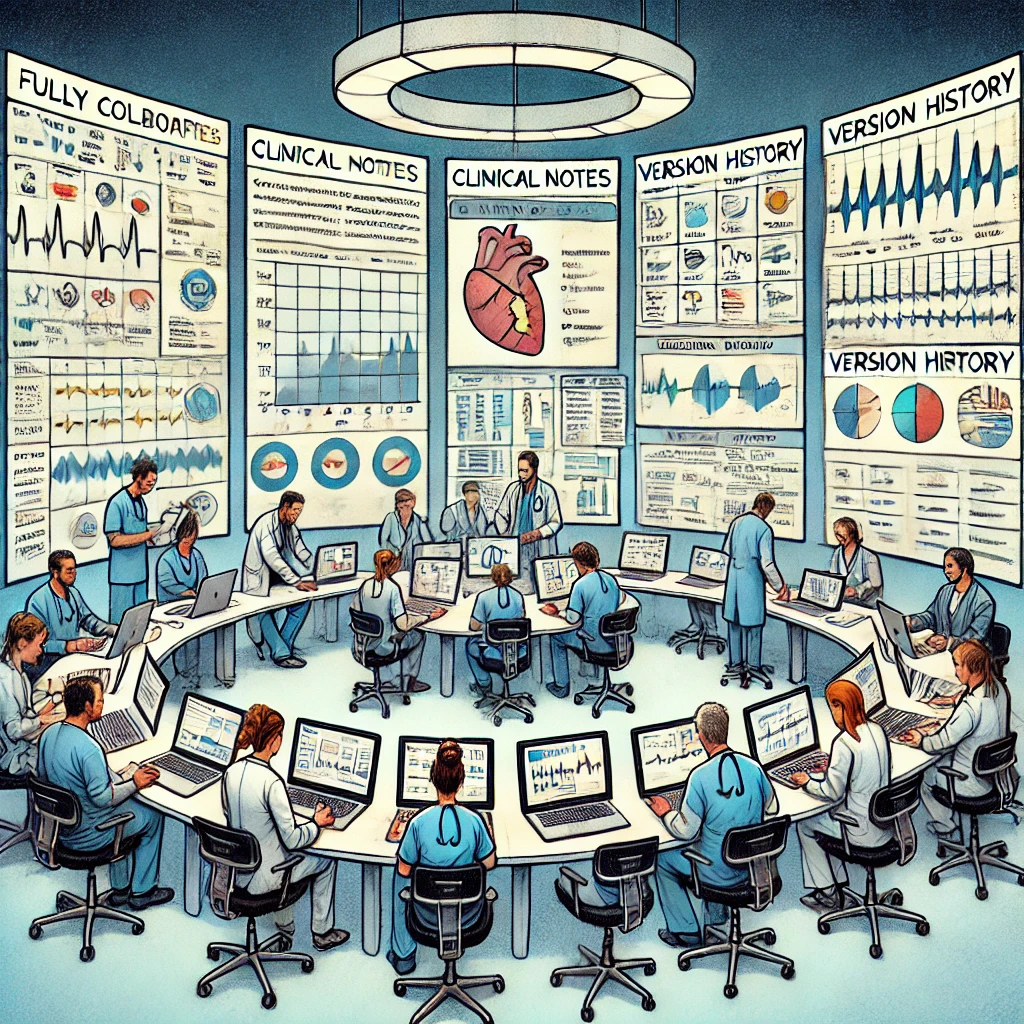
Insights from the Front Lines of Medical Documentation
We explore the root causes of information chaos, designing for clarity, and the thoughtful application of AI in medicine.

Why Clinicians Copy-Paste: Designing for Persistence, Not Duplication
Clinicians aren’t copy-pasting out of laziness. They’re trying to preserve clinical context that still matters. In this post, we explore how our research into duplication in the EHR led us to rethink documentation persistence and build Problem Link, a feature that keeps medical problems connected over time.

Why “Faster Notes” Won’t Fix Cognitive Overload
Notes that write themselves are handy—but they don’t cure information overload. Clinicians still scroll through dozens of encounters to recover context. In this post we unpack why “faster notes” isn’t enough, show how persistent, problem-oriented threads cut cognitive load, and share what we’re building at River Records to keep every detail—labs, meds, follow-ups—exactly where you need it, every time.


The Hidden Danger of Perfect-Looking Notes: Why Surface-Level Completeness Isn't Enough
In medicine, uncertainty is normal. Our notes should reflect that. Learn how to reclaim clinical reasoning in documentation — and avoid the dangers of perfect-looking but hollow notes.

The Real Cost of Note Bloat: Clinical Clarity at Risk
Medical documentation is a clinical act, not just a clerical task. Learn why note bloat undermines patient care and how clinicians can rebuild clean, useful, clinically-driven notes through thoughtful, evidence-informed practices.

Our Approach to Clinical Documentation: A Philosophical Shift
At River Records, we believe documentation shouldn’t start from a blank page every time. Clinical care is continuous, and the record should reflect that. In this post, we share the philosophy behind Stream—our AI-powered, problem-oriented documentation platform—and explain why copy-paste behavior is not clinician error, but a system failure begging for a better solution.

Notes Are Deadweight. Clinical Context Is the Future.
For years, the clinical note has been treated as the centerpiece of medical documentation. But in practice, it’s become a relic of a paper-based past—bloated with repetition, slow to navigate, and ill-suited to the way clinicians actually think. At River Records, we’re reimagining documentation not as a series of static notes, but as a living, structured reflection of the patient. By organizing everything around medical problems rather than encounters, Stream gives clinicians the context they need without forcing them to dig through layers of outdated text. The result is faster reviews, clearer updates, and documentation that actually supports care.

Building Toward Patient-Level Representation
Nicely organized, problem oriented medical problems with Recap are a breeze to read, update, and leverage in clinic for more informed decision making.


Why EHRs Actively Constrain Ideal Clinical Workflows
The rigidity of the EHR is a straightjacket on efficient workflows. The systems simply don’t match the ways clinicians think.

Why EHRs Are Causing “Note Bloat”—And How We Can Fix It
It’s time to rethink documentation to avoid “note bloat” and bring focus back to what really matters in patient care.

The Future of Live Documentation - Addressing the Growing Problem of Medical Documentation Overload
As AI continues to transform healthcare, many assume it can fix the growing issue of documentation overload. While AI offers just-in-time summaries and automation, relying solely on it without improving how data is structured leads to bloated, disorganized charts. In our latest post, we explore why better organization—through problem-oriented documentation and structured data—is key to streamlining workflows, reducing costs, and enhancing patient care.


A Fully Collaborative, Noteless Electronic Medical Record Designed to Minimize Information Chaos: Software Design and Feasibility Study
We propose and build a prototype of the world's first noteless electronic health record, which is built to optimize collaboration and minimize information chaos.

Beyond Notes: Why It Is Time to Abandon an Outdated Documentation Paradigm
The medical chart—including notes, labs, and imaging results—should be reconceptualized as a dynamic, fully collaborative workspace organized by topic rather than time, writer, or data type. This will lead to better clinical outcomes and higher job satisfaction among clinicians, who will suffer less with decreased cognitive burden.

